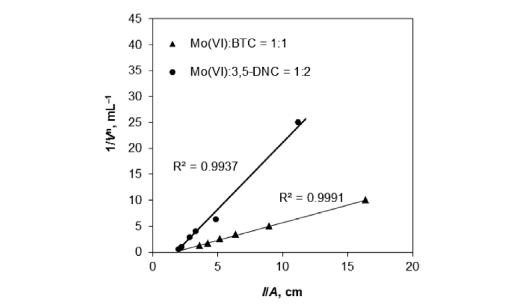Study on the Complex Equilibria of Molybdenum(VI) with 3,5-Dinitrocatehol and Ditetrazolium Salt
DOI:
https://doi.org/10.17344/acsi.2016.2513Keywords:
molybdenum, extraction equilibriums, ion-associated chelate, UV-Vis spectroscopyAbstract
The complex formed between an anionic chelate of Mo(VI)‒3,5-dinitrocatechol (3,5-DNC) with the cation of 3,3ʹ-(3,3ʹ-dimethoxy-4,4ʹ-biphenylene)bis(2,5-diphenyl-2H-tetrazolium chloride) (Blue Tetrazolium Chloride, BTC) in the liquid-liquid extraction system Mo(VI)‒3,5-DNC‒BTC‒H2O‒CHCl3 was studied. The optimum conditions for the complex formation and extraction of the ion-associated complex were established by spectrophotometry. The molar ratio of the reagents was determined by independent methods. The validity of Beer’s law was checked and some analytical characteristics were calculated. The association process in aqueous phase and the extraction equilibria were investigated and quantitatively characterized. The following key constants of the processes were calculated: association constant, distribution constant, extraction constant and recovery factor. Based on this, a reaction scheme, a general formula and a structure of the complex were suggested.

Downloads
Additional Files
Published
Issue
Section
License
Except where otherwise noted, articles in this journal are published under the Creative Commons Attribution 4.0 International License
